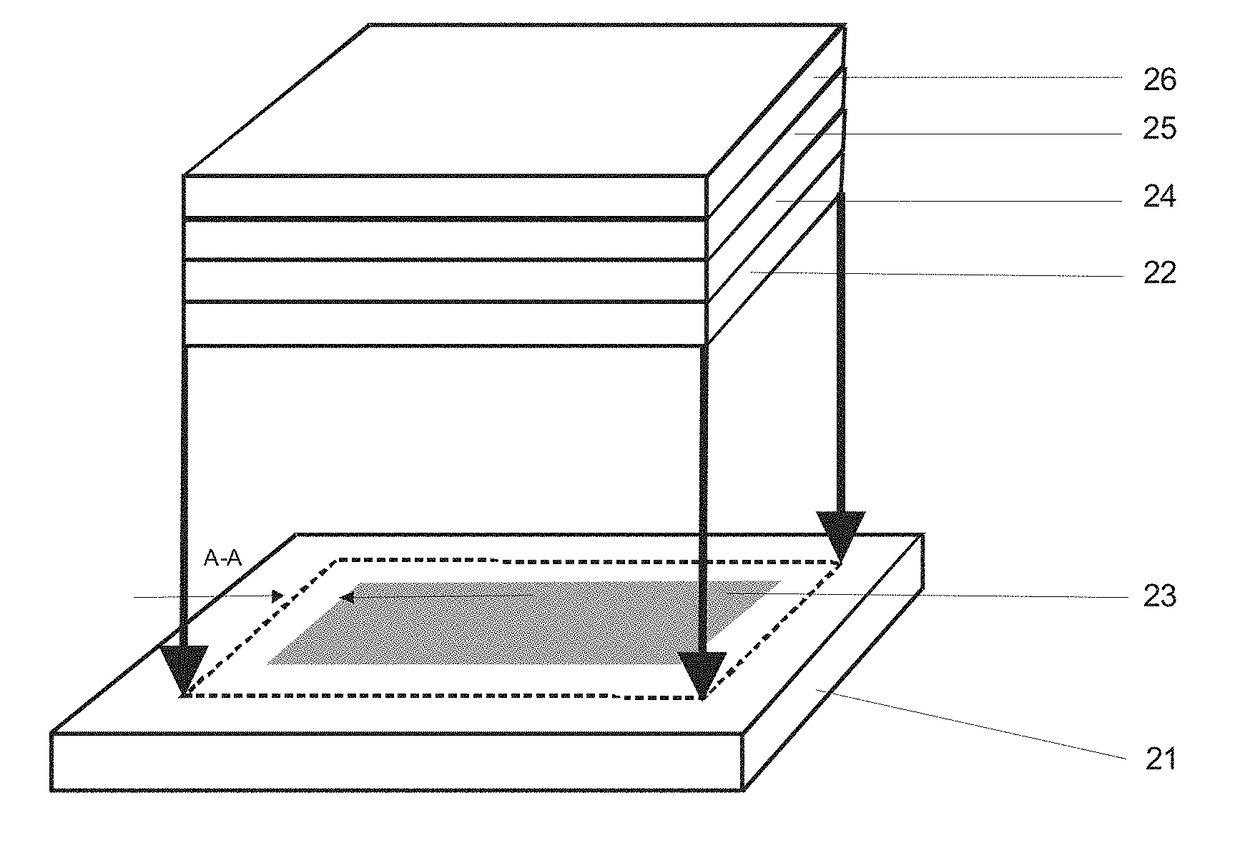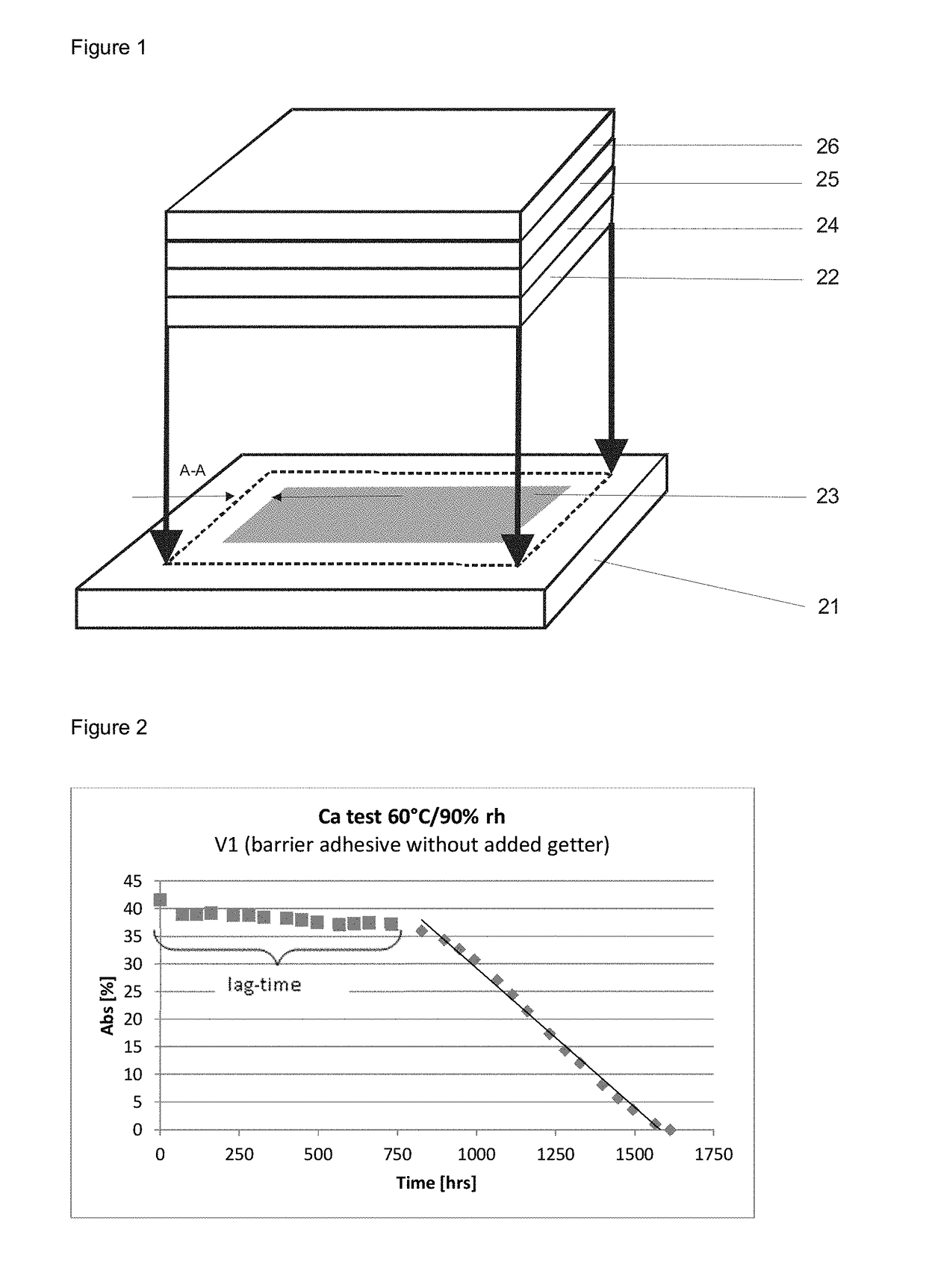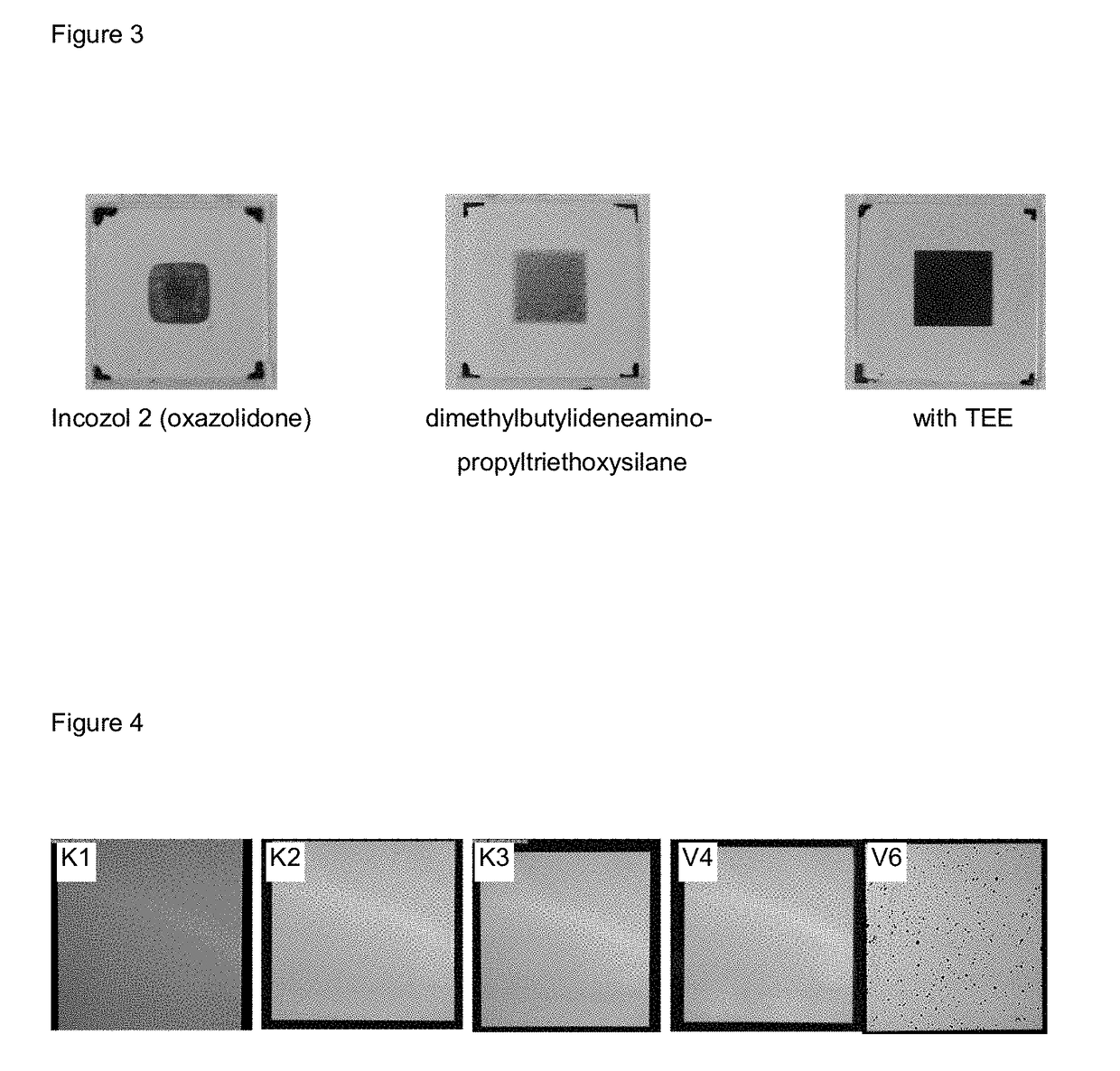Oled-compatible adhesive masses having silane water scavengers
a technology of silane water and adhesives, which is applied in the direction of film/foil adhesives, film/foil adhesives without carriers, solid-state devices, etc., can solve the problems of water or water vapour penetration, reduced flexibility, and generally not very transparent, so as to improve the adhesion on the substrate, reduce the material input, and dampen the effect of
- Summary
- Abstract
- Description
- Claims
- Application Information
AI Technical Summary
Benefits of technology
Problems solved by technology
Method used
Image
Examples
examples
Test Methods
[0128]Unless noted otherwise, the measurements are conducted under test conditions of 23±1° C. and 50±5% relative air humidity.
Determination of Breakthrough Time (Lifetime Test)
[0129]A measure that was employed for the determination of the lifetime of an electronic assembly was a calcium test. This is shown in FIG. 1. For this purpose, a thin calcium layer 23 of 10×10 mm2 in size is deposited onto a glass plate 21 and then stored under a nitrogen atmosphere. The thickness of the calcium layer 23 is about 100 nm. For the encapsulation of the calcium layer 23, an adhesive tape (23×23 mm2) having the adhesive 22 to be tested and a thin glass slide 24 (35 μm, from Schott) as carrier material are used. For stabilization, the thin glass slide was laminated with a 100 μm-thick PET film 26 by means of a 50 μm-thick transfer adhesive tape 25 to give an acrylate pressure-sensitive adhesive of visually high transparency. The adhesive 22 is applied to the glass slide 21 in such a wa...
PUM
| Property | Measurement | Unit |
|---|---|---|
| thickness | aaaaa | aaaaa |
| temperature | aaaaa | aaaaa |
| temperature | aaaaa | aaaaa |
Abstract
Description
Claims
Application Information
 Login to View More
Login to View More - R&D
- Intellectual Property
- Life Sciences
- Materials
- Tech Scout
- Unparalleled Data Quality
- Higher Quality Content
- 60% Fewer Hallucinations
Browse by: Latest US Patents, China's latest patents, Technical Efficacy Thesaurus, Application Domain, Technology Topic, Popular Technical Reports.
© 2025 PatSnap. All rights reserved.Legal|Privacy policy|Modern Slavery Act Transparency Statement|Sitemap|About US| Contact US: help@patsnap.com



